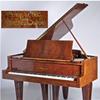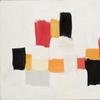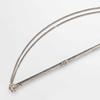Lea Grundig drawing documents dark chapter of 20th century
- October 11, 2010 13:48
John Phillips, famous for his striking photo documentaries in Life Magazine, acquired another kind of compelling document of the 20th century while in Palestine as a war correspondent. He purchased a drawing directly from the artist Lea Grundig (German, 1906-1977) in the early 1940s that depicts a firsthand account of the experience of Jews during the Holocaust.
From Phillips's collection, Grundig's "In den Abgrund" [Into the Abyss] came via New York to Ketterer Kunst in Munich, where it will be auctioned on October 22. Never before has a work from this period by one of the 20th century’s most important female artists been offered on the international auction market, according to the auction house.
Similar to Käthe Kollwitz, Lea Grundig first used her artistic talents to fight for the improvement of the working poor's living conditions in post-WWI Germany. "I always wanted to depict people so that the observer gets an idea of their misery and suffering and is enraged about it", said Grundig in Gesichte und Geschichte (Berlin: 1958, p.93). Indeed, her figures show the artist’s passion and elicit a direct emotional expression.
The daughter of Jewish merchants, Grundig studied art against her parent’s will, at first at the Dresden School of Applied Arts and later at the Dresden Academy of Fine Art. She attended the master class of Otto Gußmann together with artists such as Otto Griebel, Wilhelm Lachnit and her future husband, Hans Grundig.
Grundig addressed the grave situation of the working class, documented the terrors of the Holocaust and eventually worked up the dramatic impressions made on her escape from Germany. Relentlessly, she denounced fascism as insanity and blindness.
She illustrated the appalling conditions on the "Pacific," a misnamed ship on which the Jews who managed to flee the Holocaust were brought to Palestine refugee camps at the risk of losing their lives. "In den Abgrund" presumably originates from this experience.
The work gives a haunting idea of the confinement and the people’s panic in an undefined and gloomy room. The feather and India ink drawing is sheet 12 from the series "Im Tal des Todes" [In The Valley of Death]. Originally titled "Deutschland - Ein Schlachthaus" [Germany – A Slaughterhouse], the cycle of 17 hand drawings was made in Palestine between 1942 and 1944 in reaction to the Holocaust.
Grundig‘s works are impressive documents of inhumane conditions. By bringing back such dramatic events to the observers‘ memory, her work adds to the collective awareness of the past and contributes to positive change.
This work is part of the auction Modern Art/ Side lines of the German Avant-garde at Ketterer Kunst on October 22.





















